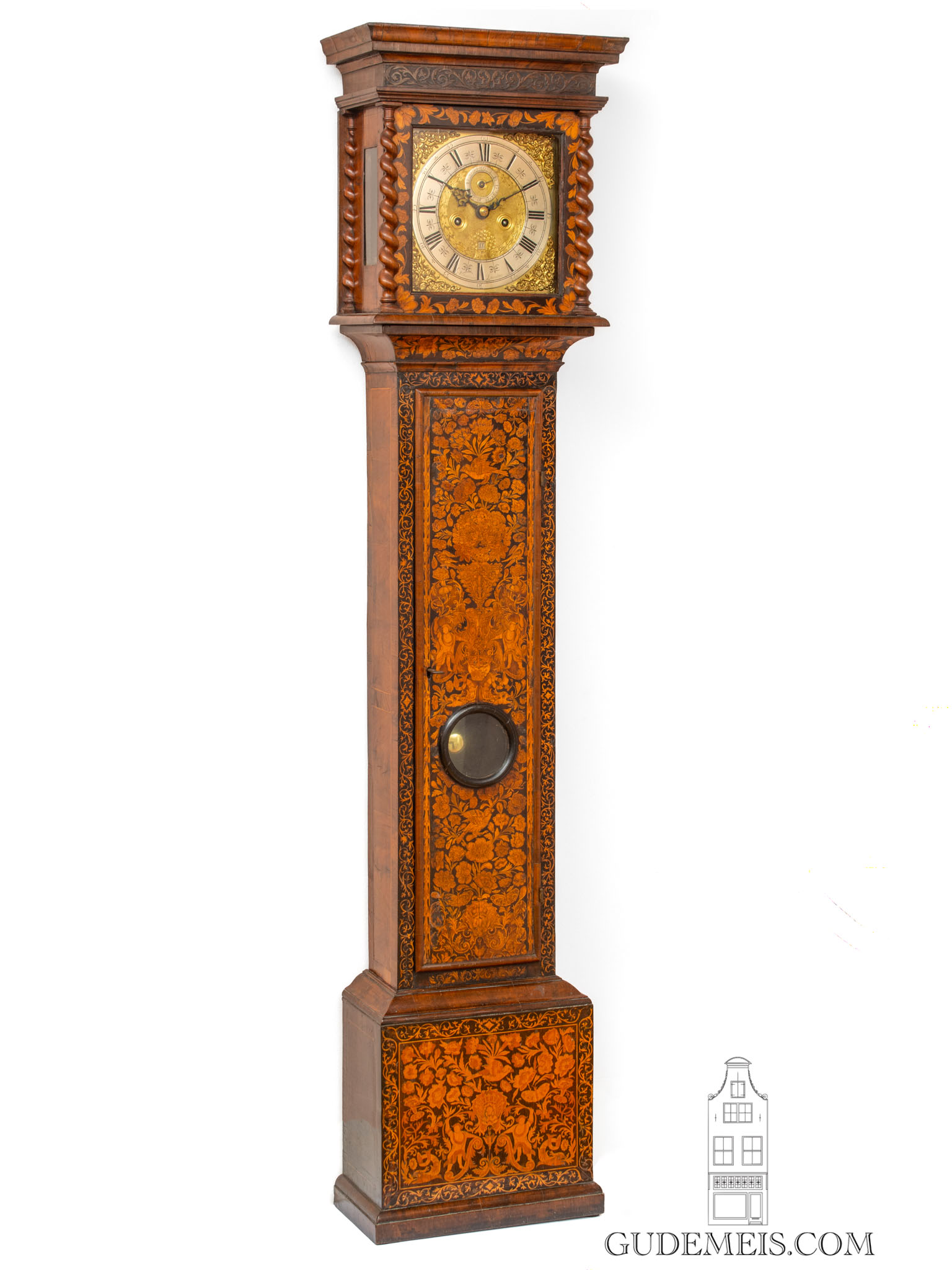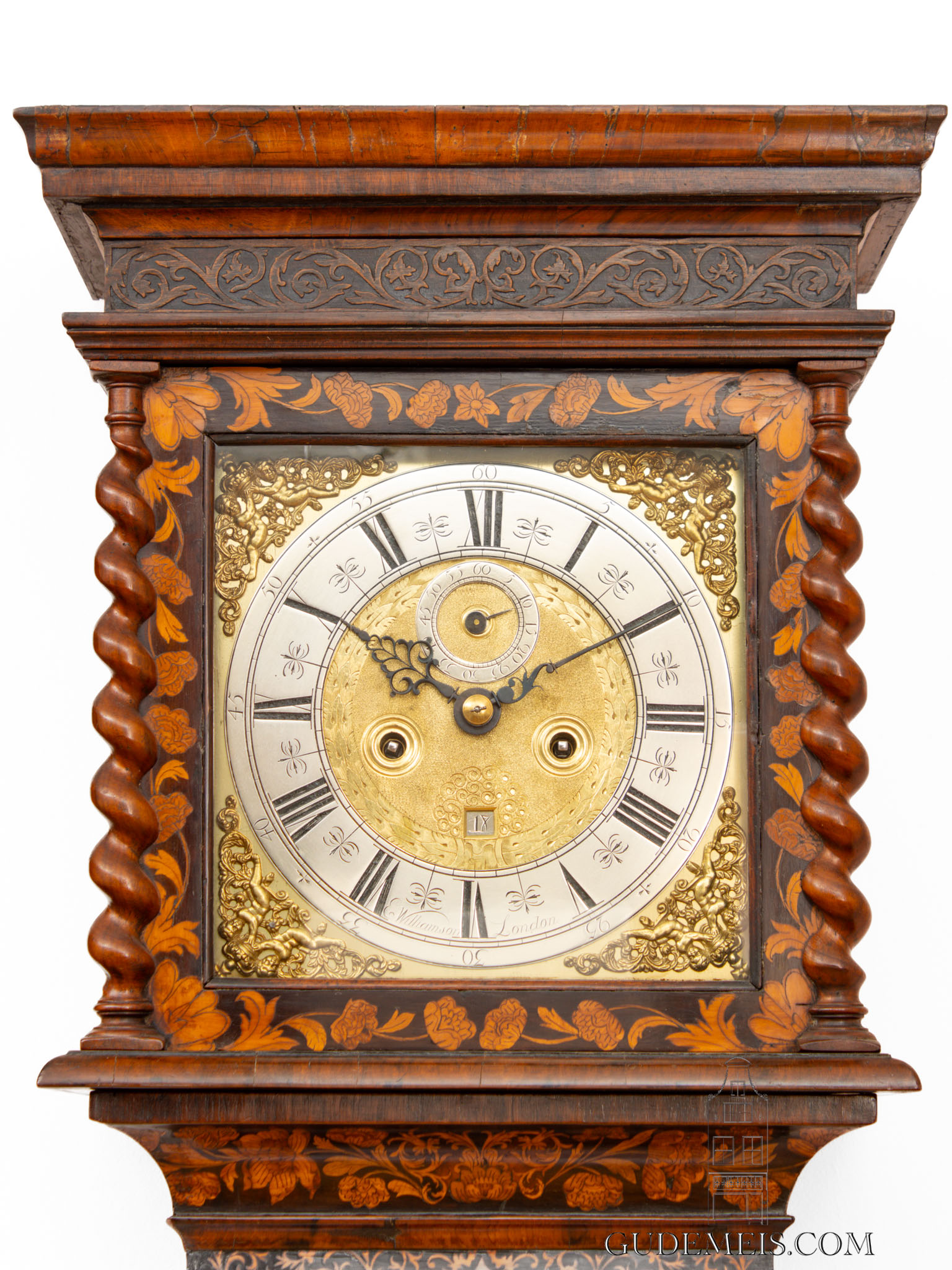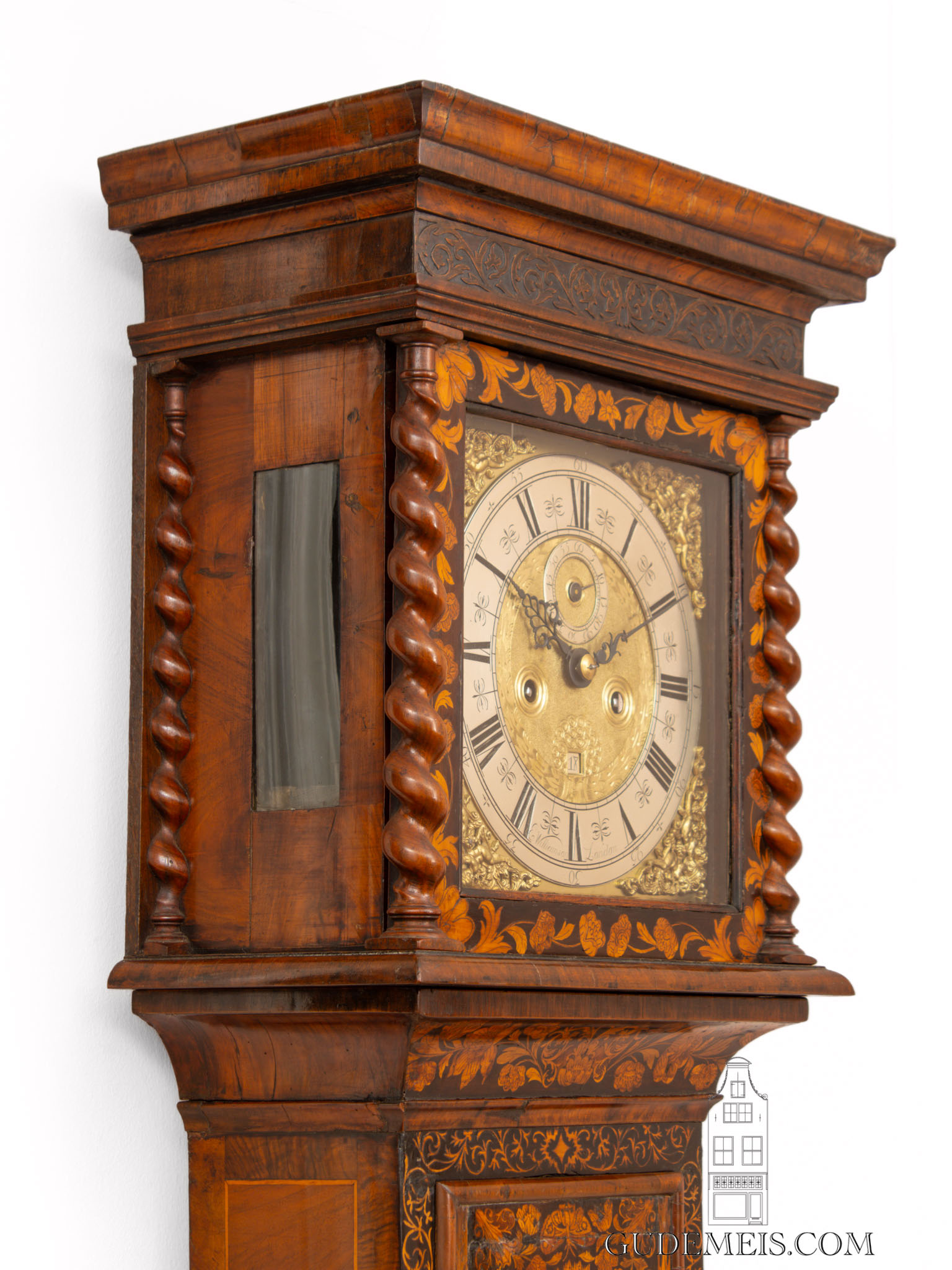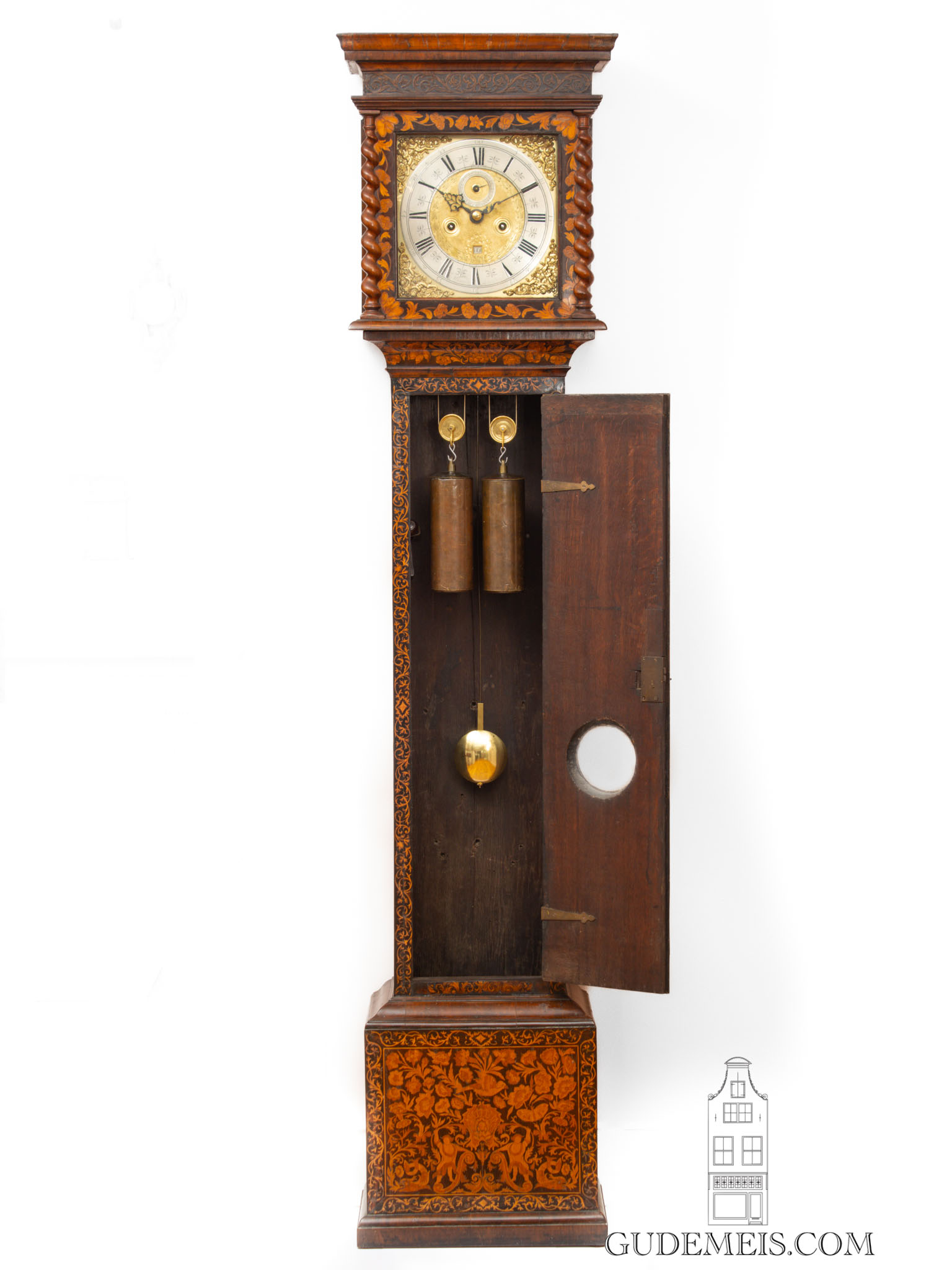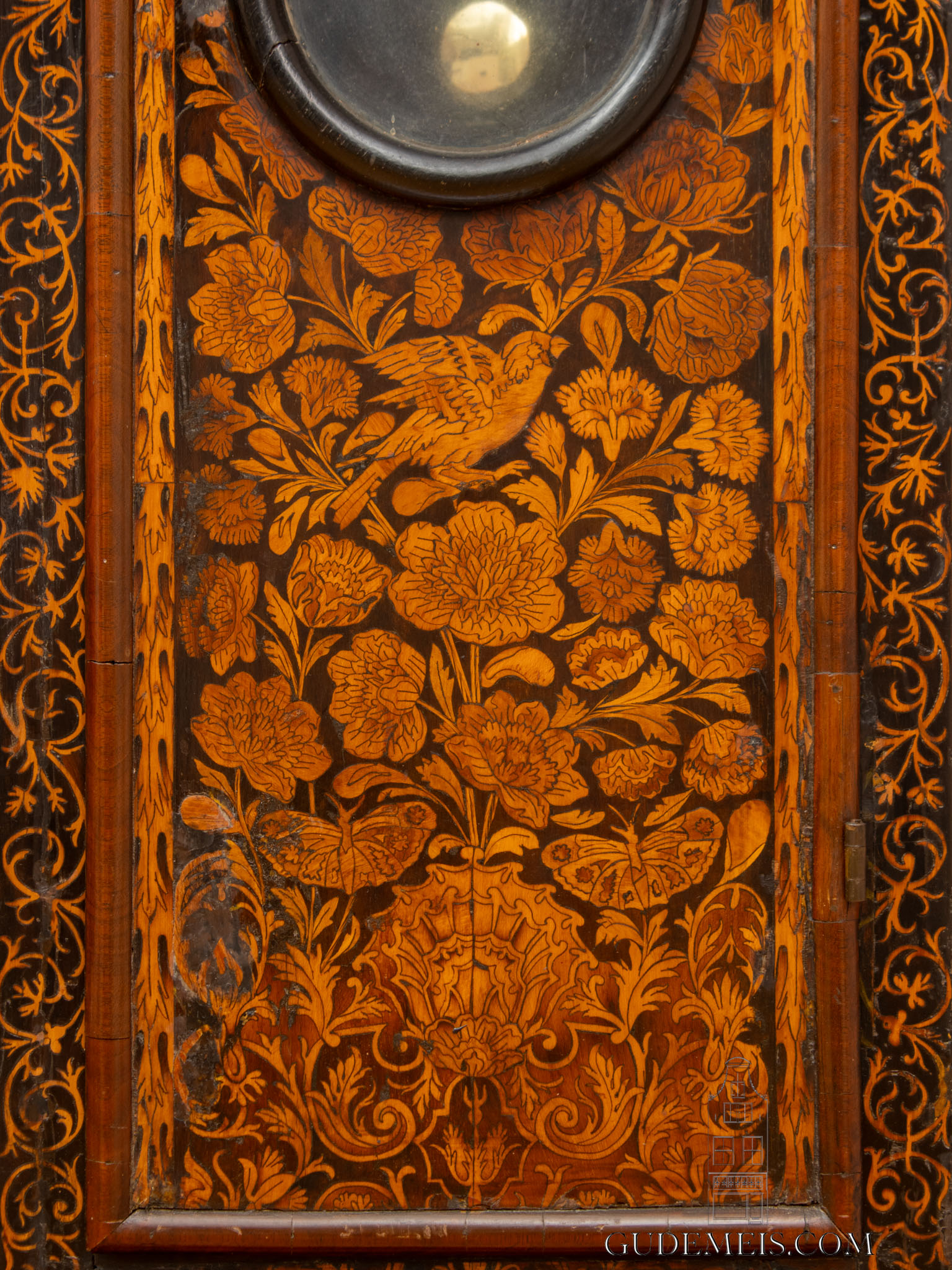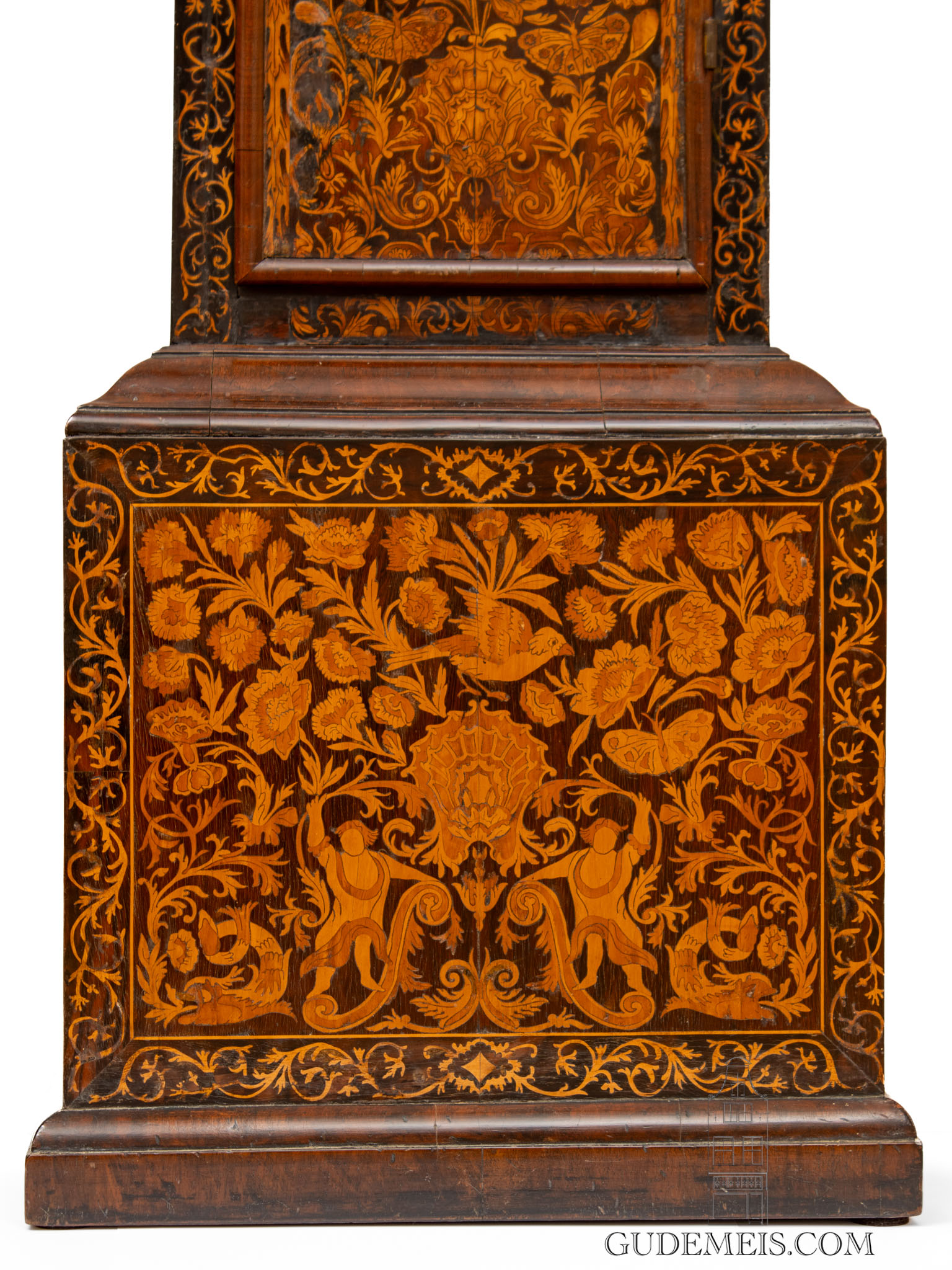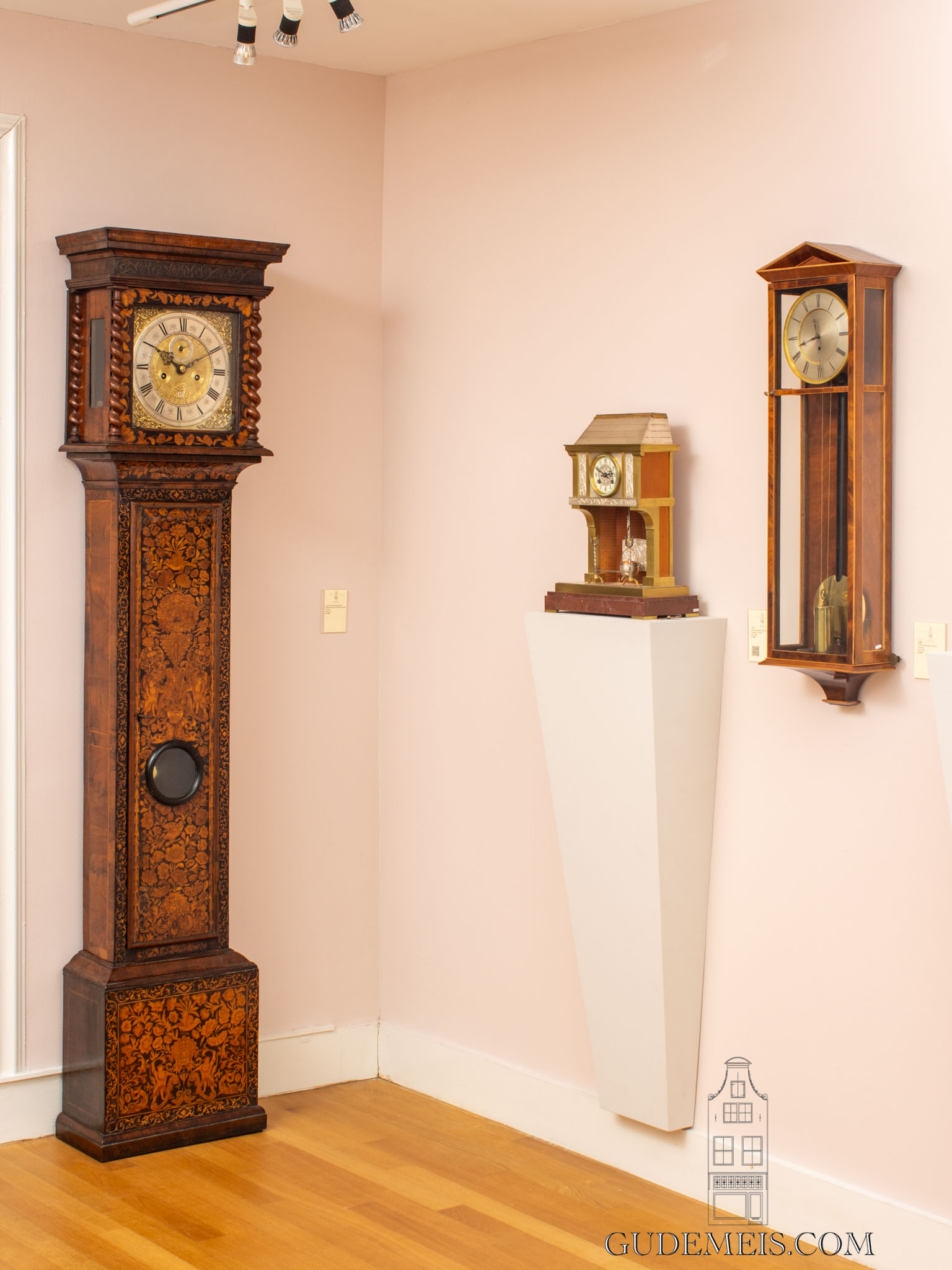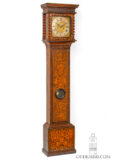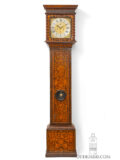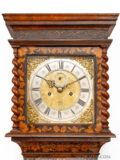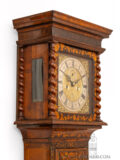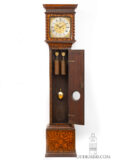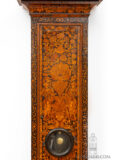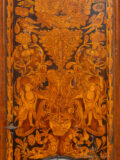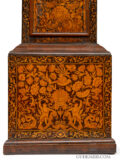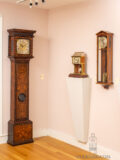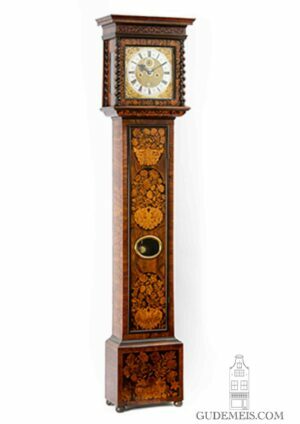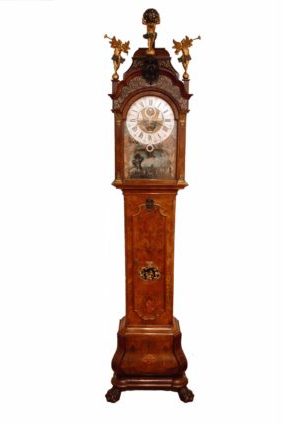An English marquetry longcase clock, E. Williamson London, circa 1695.
Description
Marquetry
With a little imagination one can understand that the case of this clock was modeled on a classical column. Around 1660 just after the invention of the pendulum movement by Huygens, it was Ahasuerus Fromanteel who came up with a longcase clock. It had a wider square base, a slender trunk and a protruding hood, just like a classical column. This is no surprise since many artisans during the Baroque era looked at the classical architecture and art for inspiration. Most of the times, types evolve step by step. But it seems that Fromanteel’s design neared perfection since it was followed almost without change for over fifty years. This fine piece also has the restrained silhouette and balanced design of the earlier clocks that make it an independent object. Contrasting to this sober outline is the intricate marquetry inlay which was very fashionable in both England and Holland around 1700. This technique shows the craftsmanship of the English cabinet makers and is captivating to look at. After more than 300 years this fine clock is still a good timekeeper and a beautiful object.
Square dial
The 27.5-cm brass square dial has an applied silvered chapter ring with Roman numerals signed E. Williamson London. The foliate shaped and pierced hands are made of blued steel. The matted centre has a wheatear border and ringed winding holes. There is a subsidiary seconds and an aperture for the date indication. The corners are adorned with crown-and-cherub spandrels.
inner countwheel
The weight driven movement has well turned ringed pillars and is of eight day duration. It is regulated by anchor escapement in combination with a seconds pendulum. The clock strikes the hours on a bell by means of an inner countwheel.
Walnut case
The walnut case is throughout adorned with fine marquetry inlay of flowers, branches and birds. It has a flat moulded hood with foliate pierced frets and twisted columns to the corners. The slender trunk has a long door with an annular lenticle. The moulded square base is raised on flat feet.
Edward Williamson
Edward Williamson is recorded becoming an apprentice in 1685.
